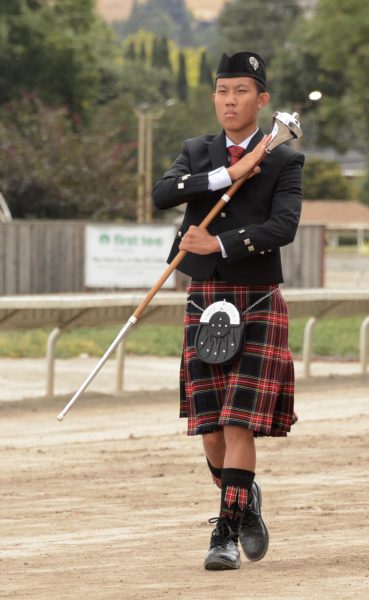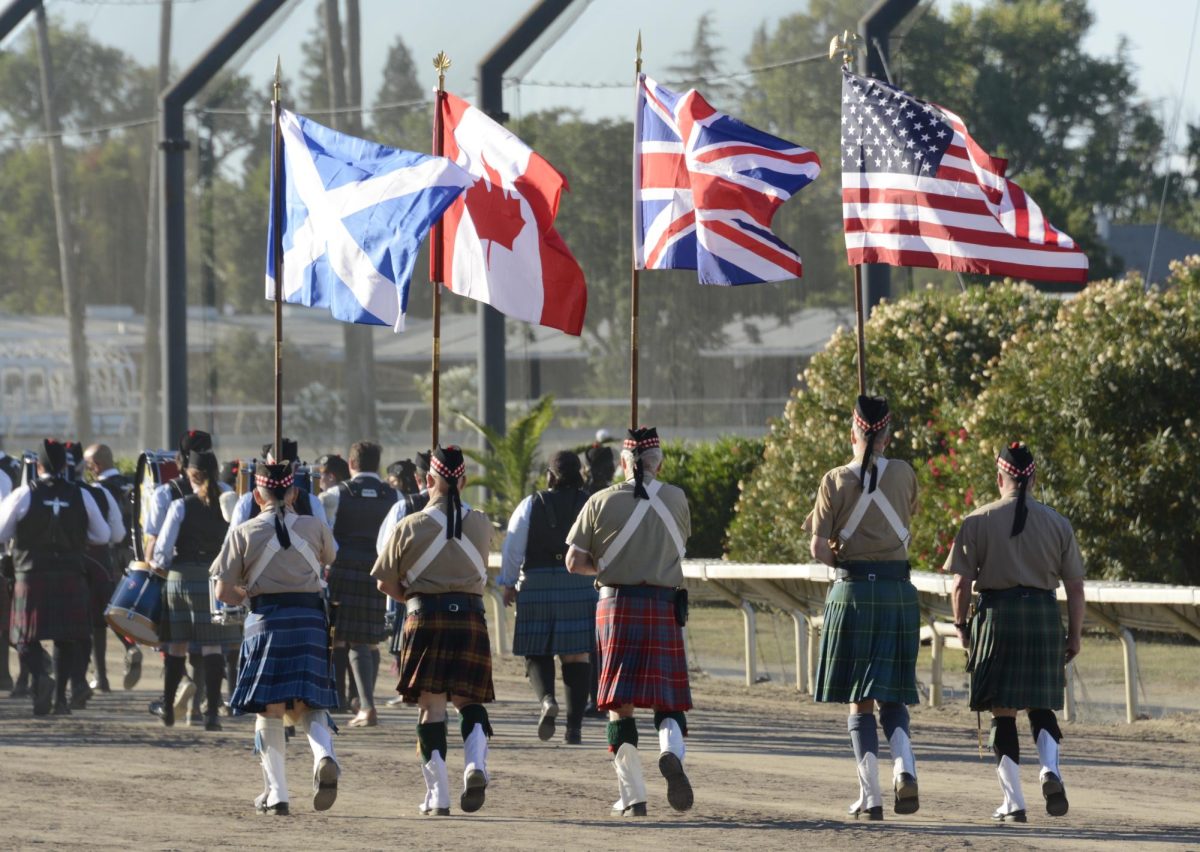Late-summer visitors to Pleasanton, Calif., may find themselves surrounded by a sea of tartan kilts better suited to the damp mists of the Scottish Highlands than to California. Every Labor Day weekend, the Caledonian Club of San Francisco brings a bit of Scotland to this section of the California coast. At the 157th annual Scottish Highland Gathering and Games, the cheers of spectators — and the tuneful drone of bagpipe music — fill the air.
Since 1866, the Caledonian Club of San Francisco has hosted the Highland Gathering and Games to celebrate Scottish culture and heritage. The games took place around the Bay Area before settling on the Pleasanton fairgrounds in the 1990s.
Today, the games draw tens of thousands of attendees and competitors from around the world. At its 150th anniversary, an estimated crowd of over 50,000 attended. Many consider it to be the largest games in the United States and one of the largest in North America. First Chieftain of the Caledonian Club Ron Dunne stands firm in his belief in the Pleasanton games’ preeminence.
“[The status of the largest games in America] is disputed between us and one other group on the East Coast,” Dunne said. “I would say we are, and if [the other group wants] to dispute that, we are actually the longest running consecutive games in the United States. Not even the Spanish Flu stopped us.”
Attendees can explore many activities, from bagpipe performances and actors of living history to sheepdog competitions and Scottish clan tents. They can watch traditional dancing, attend athletic events and admire birds of prey and British cars.

The traditional caber toss centers around a roughly 17 foot long and 90 pound tree log, or caber, which competitors flip end over end. In the hammer throw, weight toss and stone put, athletes aim to toss a weighted object the furthest distance. In the weight-over-the-bar competition, they aim to toss a stone vertically over increasing heights.
Zac Shi, 17, a senior at Lincoln High School, won the Drum Major competition in the Juvenile category. Drum Majors lead bagpipe bands, directing pipers and drummers and ensuring band cohesion.
“I enjoy the competition aspect,” Zac said. “You have to persevere. There’s going to be lots of setbacks: if you hit yourself with your mace, you have to be able to just continue and realize it’s an end product. You’re putting on a show.”
Over 20 bagpipe bands from across North America competed at the Games on Labor Day. Though some bands came from Utah, Minnesota or Canada, most were California-based, some hailing from Pasadena, University of California, Riverside and the Caledonian Club of San Francisco’s own Prince Charles Junior Pipe Band.
Around 225 bagpipers, commonly known as pipers, participated in solo competitions ranging in genre from marches to hornpipes. Steward Lynne Miller, 78, guides performers to competition locations. He has attended 35 games and teaches bagpipes.
“A really good solo piper with his bagpipes absolutely in tune, a good pipe band, everything right in sync — the drums, the pipers — that’s nice to listen to,” Miller said.

Some had other thoughts on the bagpipes. Mason, 6, once looked less favorably upon the loud noises, but now sees them as part of the event’s background.
“I’m used to them,” Mason said.
Harp player of 25 years Val Wann a member of the folk harp group Harpers Hall, performed Gleanntáin Ghlas’ Ghaoth Dobhair, or the Green Glens of Gweedor, an Irish song composed by artist Francie Mooney.
“The harp has a certain amount of a romance to it,” Wann said. “Everybody seems to like the harp — I shouldn’t admit it, but that lets me get away with being a little sloppier than I would with other instruments.”
In all the events, participants and performers find community and camaraderie. The nonprofit St. Andrews Guild reenacts the life of Mary, Queen of Scots. Guild member Stacey dressed as Countess of Marr Annabell Murray at the Games, interacting with visitors and other audience members to educate and inspire excitement about history.
“[I joined the Guild for] a sense of family and a sense of closeness,” Stacey said. “We’re all very close in the Guild and we all treat each other like family. It’s very nice to have that when you’re participating in something like this instead of just coming alone.”
The Pleasanton Games also hosted dozens of clans and clan-affiliated organizations who sought to tell their clan’s story. Scottish clans include groups led by chieftains and family groups, and hundreds exist around the globe.
Jeanie and Roger Bickell of Clan Carmichael find other members of their clan at the Games. They have operated the Clan Carmichael booth at the Pleasanton Games for over a decade.
In addition to conducting community outreach, clans offer a bond between members worldwide. For members of the Scottish community scattered across the globe, the Highland Games present a chance to connect with the traditions of their parents and grandparents.
“I think for me, it’s pride in one’s culture and heritage,” Jeanie Bickell said. “You need to bridge between the old and the young to keep it going. There’s nothing more powerful than having that pride and heritage of your family. You can do great things that way.”
To many, the Games also appeal as a place to meet others and build community among those who participate in uncommon events, such as sheepdog competitions and falconry. While some attendees come for competition, community or clan and family ties, many simply seek a good time.
Joseph Carroll, known around the games as the “Celtic Dragon Slayer,” dresses up in replicas of armor and a dragon’s head to take pictures with children and other visitors.
“I enjoy making someone smile,” Carroll said. “If I can make a smile, a happy dream of dragons, then I do what I need to do. I have good memories of everybody I know and meet.”
The Games inspire belonging and affection in the diverse attendees of all backgrounds.
“I keep coming back because I love it,” Miller said. “I love it. I’m 78 now, and if I should keep standing up and breathing, I’ll be here.”





